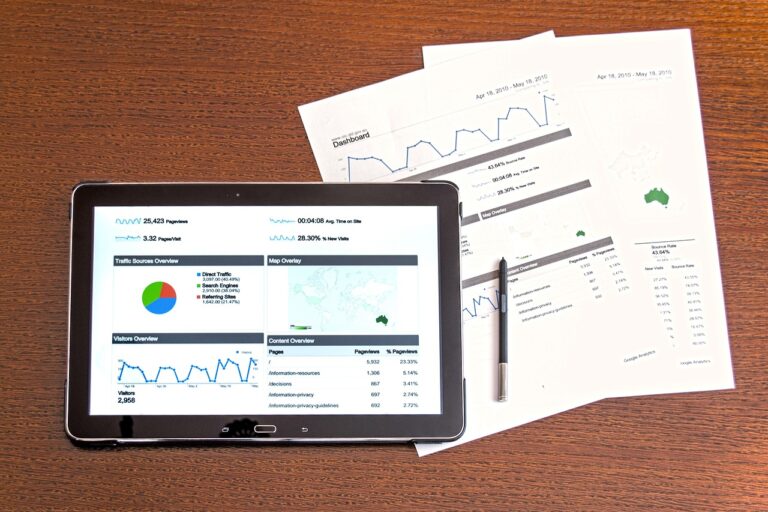The Impact of Edge Computing on Remote Infrastructure Monitoring and Maintenance Systems
Betstarexch, 12bet: Edge computing plays a critical role in enhancing remote infrastructure monitoring processes. By decentralizing data processing and analysis closer to the source of data generation, edge computing reduces latency and enables real-time insights. This capability is particularly beneficial for industries such as manufacturing, energy, and telecommunications where timely decision-making based on accurate data is essential for operational efficiency and cost savings.
Moreover, edge computing enhances the scalability and flexibility of remote infrastructure monitoring systems. By distributing computing resources across a network of edge devices, organizations can easily adapt to changing monitoring needs without overloading centralized servers. This distributed approach also improves system resiliency by reducing the reliance on a single point of failure, ensuring continuous monitoring and data collection even in the event of network disruptions.
Challenges Faced by Traditional Monitoring Systems
Traditional monitoring systems face numerous challenges in the current landscape of remote infrastructure monitoring. One major issue is the high latency experienced when data is transmitted back and forth between the remote sensors and central servers. This delay can hinder real-time decision-making and lead to inefficiencies in maintenance processes. Additionally, traditional systems often lack the scalability needed to adapt to the increasing volume of data generated by remote sensors, resulting in data overload and potential system failures.
Another significant challenge faced by traditional monitoring systems is the vulnerability to network interruptions and data breaches. With data typically being transmitted over long distances through centralized servers, the risk of connectivity issues and security breaches is heightened. This not only jeopardizes the integrity of the data being collected but also raises concerns about the privacy and reliability of the monitoring system as a whole.
High latency in data transmission between remote sensors and central servers
Lack of scalability to handle increasing volume of data from remote sensors
Vulnerability to network interruptions and data breaches due to centralized server system
Traditional monitoring systems are also limited by their inability to effectively integrate with modern technologies such as cloud computing and IoT devices. These systems often rely on outdated hardware and software, making it difficult to leverage the benefits of cloud-based storage and processing capabilities. As a result, traditional monitoring systems struggle to keep up with the demands of today’s digital infrastructure, leading to inefficiencies in data management and analysis.
Furthermore, traditional monitoring systems face challenges related to maintenance and updates. With many legacy systems operating on proprietary technology that is no longer supported by manufacturers, organizations may struggle to find replacement parts or receive necessary software updates. This can lead to increased downtime for monitoring systems, impacting overall operational efficiency and reliability.
In conclusion, traditional monitoring systems face a multitude of challenges in today’s rapidly evolving technological landscape. From high latency issues and scalability limitations to vulnerability concerns and integration difficulties with modern technologies, these systems must adapt in order to remain effective tools for remote infrastructure monitoring. Organizations looking to overcome these challenges should consider investing in more advanced monitoring solutions that offer greater flexibility, security, and compatibility with emerging technologies.
Benefits of Implementing Edge Computing in Maintenance Systems
Edge computing offers numerous benefits when integrated into maintenance systems for remote infrastructure monitoring. By processing data closer to its source, edge computing reduces latency and improves real-time decision-making capabilities. This allows for quicker response times to potential issues, leading to enhanced operational efficiency and cost savings.
Additionally, edge computing enables more efficient data management by filtering and analyzing information at the edge before sending relevant data to the cloud for further processing. This reduces the volume of data that needs to be transmitted over networks, decreasing bandwidth usage and associated costs. Overall, the incorporation of edge computing in maintenance systems enhances overall system performance and reliability.
What is the role of edge computing in remote infrastructure monitoring?
Edge computing allows for data processing to occur closer to the source of the data, reducing latency and enabling real-time monitoring of infrastructure.
What challenges are faced by traditional monitoring systems?
Traditional monitoring systems may struggle with handling large amounts of data, latency issues, and reliability issues when remote monitoring is required.
What are the benefits of implementing edge computing in maintenance systems?
Implementing edge computing in maintenance systems can lead to improved real-time monitoring, reduced latency, enhanced data processing capabilities, and increased reliability in remote monitoring scenarios.







